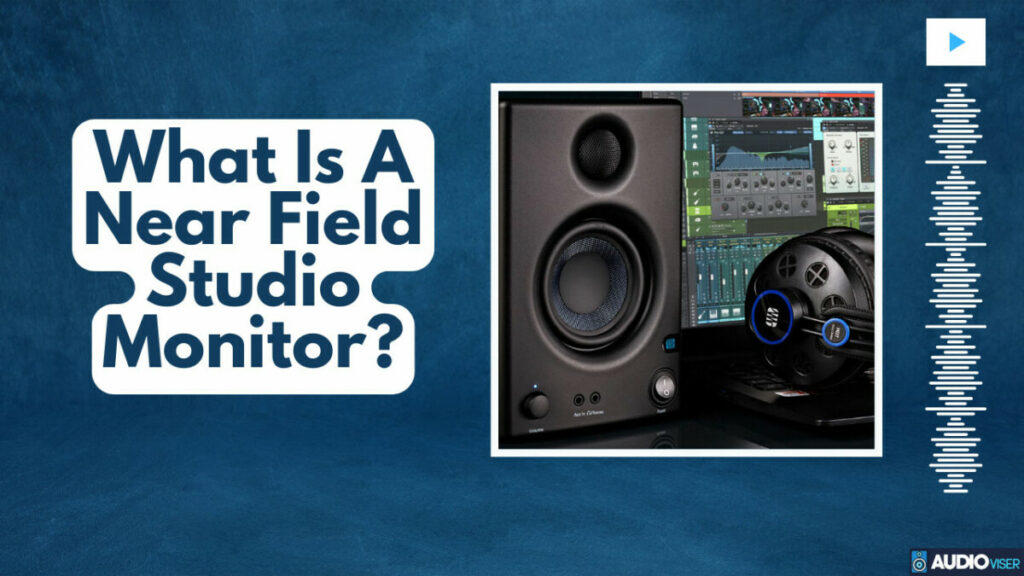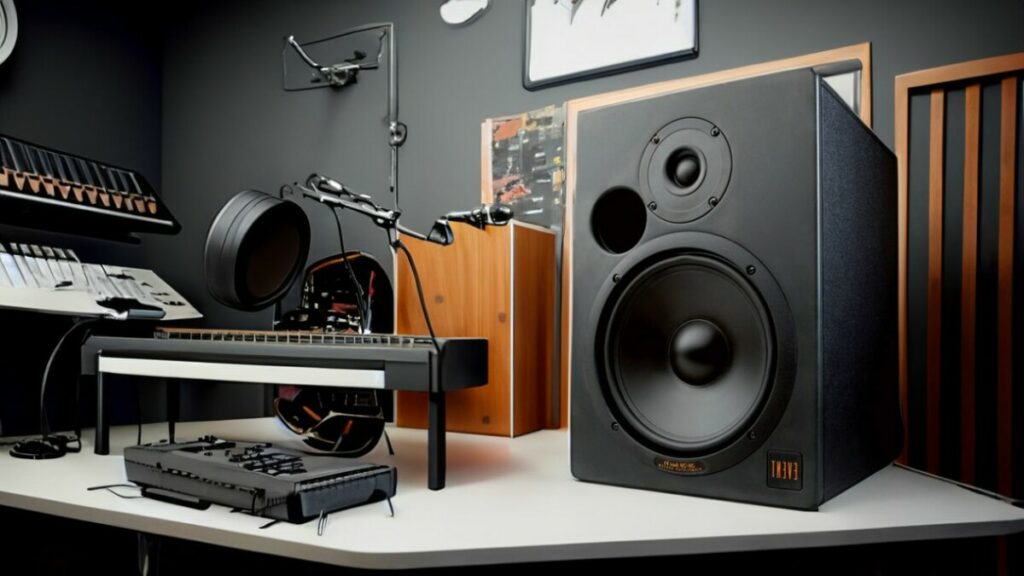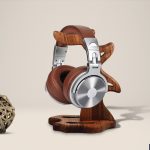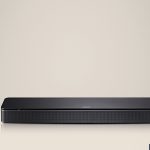Finding yourself a bit lost when it comes to all the hype about near field studio monitors? Trust me, you’re not the only one. These cutting-edge gadgets are a game changer when it comes to creating top-notch sound in tight spaces.
But let’s break it down. What are they really? Why are they a big deal? And how on earth do you pick the right one? No need to panic, I’ve got your back.
In this guide, we’ll strip down the complexities of near field studio monitors, highlight their standout features, and give you a run-down on how to make them work for your sound game.
What Exactly Is A Near Field Studio Monitor?
A near-field studio monitor is a specially crafted speaker that’s meant to be a stone’s throw away from the listener – think like an arm’s stretch or a bit more. Popping these babies down so close helps cut down on any effects your room’s acoustics might throw your way, giving you a more straight-up and precise experience of your audio. That’s why they’re super popular in recording studios for all the heavy-duty mixing and mastering. They serve up a detailed sound that’s as clear as a bell, making it a breeze to fine-tune those audio tracks.
Basics of Near Field Studio Monitors
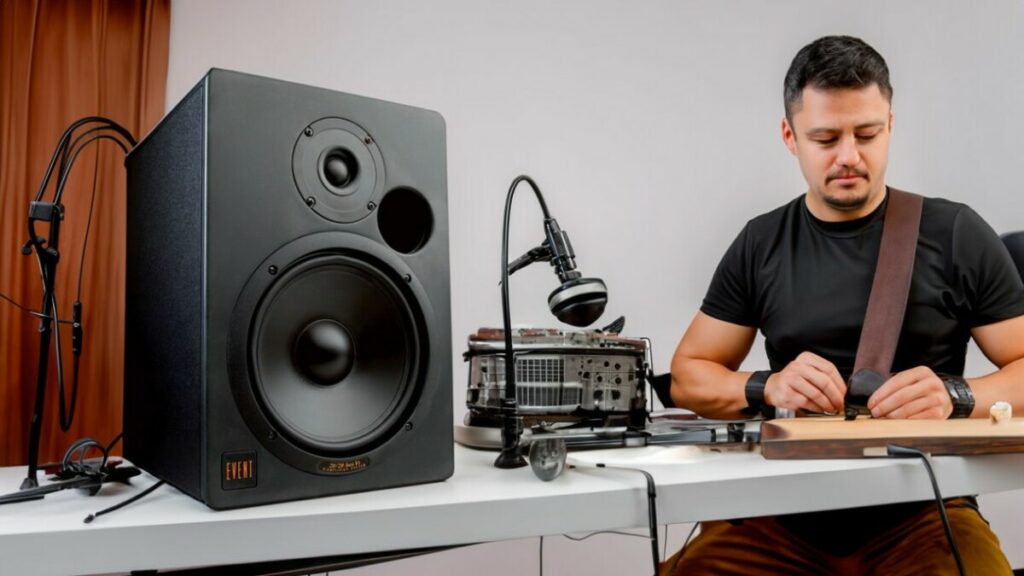
Then, there’s your room’s acoustics to consider. If it’s bouncing sound around like a pinball machine, it can mess with your sound, adding some unwanted flavor to your mixes. The gold standard here is to aim for a balanced, even frequency response, so your epic mixes sound just as good on other sound systems.
Getting a handle on these elements can seriously up your audio game. So, get ready to dive deep and amp up your audio production prowess.
Key Features of Near Field Studio Monitors
If you’re on the hunt for top-notch audio gear, don’t underestimate the importance of features like killer high-frequency response and spot-on bass reproduction. Near field studio monitors are your go-to for delivering that kind of precision. They’re champs at handling monitor positioning and room acoustics.
- Monitor Positioning: Here’s a tip for you – to score that perfect sound, aim to set your monitors at the same height as your ears, equidistant from each other and you. Think of it as creating an equilateral triangle – it’s the sweet spot for listening.
- Room Acoustics: What makes near field monitors stand out is their compact size, which makes them less susceptible to the influence of room acoustics. They’re a solid fit for smaller spaces or rooms that haven’t been acoustically treated.
- Frequency Response: Near field monitors are absolute pros at accurately belting out high frequencies and bass, giving you a crystal-clear, rich sound that’s perfect for mixing and mastering.
The Importance of Near Field Studio Monitors in Audio Production
When you’re dabbling in audio production, you can’t afford to underestimate the power of those small but mighty speakers, known as near field studio monitors. They’re a game-changer in delivering premium sound quality. It’s all about where you place them though. The key is to arrange them in a way that they’re at an equal distance from each other and you, essentially forming a perfect triangle. This setup gives you what we call a ‘sweet spot’—the perfect zone for the most accurate sound experience.
Now, let’s not forget the elephant in the room—literally. Room acoustics. They can make or break your sound. If your room acoustics are off, they can warp the sound and you’ll end up with a mix that sounds nothing like you intended. So, you need to be mindful of the size of your room, its shape, and even what materials it’s made from.
A little acoustic treatment can go a long way in controlling sound reflection and absorption and it can seriously amp up the performance of your near field studio monitors.
What Are the Differences Between Two Way and Near Field Studio Monitors?
When comparing two way studio monitors and near field studio monitors, one key difference is the speaker configuration. Two way studio monitors incorporate separate drivers for the low and high frequencies, resulting in better audio reproduction. On the other hand, near field studio monitors have a single driver, often accompanied by a tweeter, providing a compact and focused sound.
Tips for Using Near Field Studio Monitors for Optimal Sound Quality
For killer sound quality, it’s not just about having top-notch speakers, it’s about making them work for you. Your monitors’ placement and sound calibration are the secret sauce to unlock their full potential.
Picture your space as a perfect triangle – your monitors and your sweet spot for listening make up the three points. The trick here is to angle your monitors towards you at roughly 60 degrees for the most bangin’ stereo imaging.
But don’t snooze on sound calibration. Grab a sound pressure level (SPL) meter and get to work on measuring the output from each monitor. Tweak them until they both hit the same level. And remember, it’s not a competition of who’s louder, it’s about harmony.
More Information About Studio Monitors:
Within the audio realm, knowing your gadgets inside out is absolutely essential to nail that sound quality you’re hunting for. Fun fact? Some peeps have found a sweet spot using studio monitors as speakers for their TV. Sure it’s a bit off the beaten path, but hey, it offers a very distinct audio escapade that’s totally worth it.
Speaking of out-of-the-box moves, you might have wondered about placing your studio monitors sideways. Now, most peeps have them lined upright, but there are times when going sideways can work wonders.
Another question that might’ve crossed your minds is around leaving your studio monitors running all the time. And on that note, it’s pretty vital to wrap your head around the plus and minuses for the life of your gear.
Sound Technician
I’m a sound technician, ensuring that your events and shows are heard loud and clear. Crafting audio broadcasts, studio recordings, and live mixes with finesse to provide the best quality sound experience.

